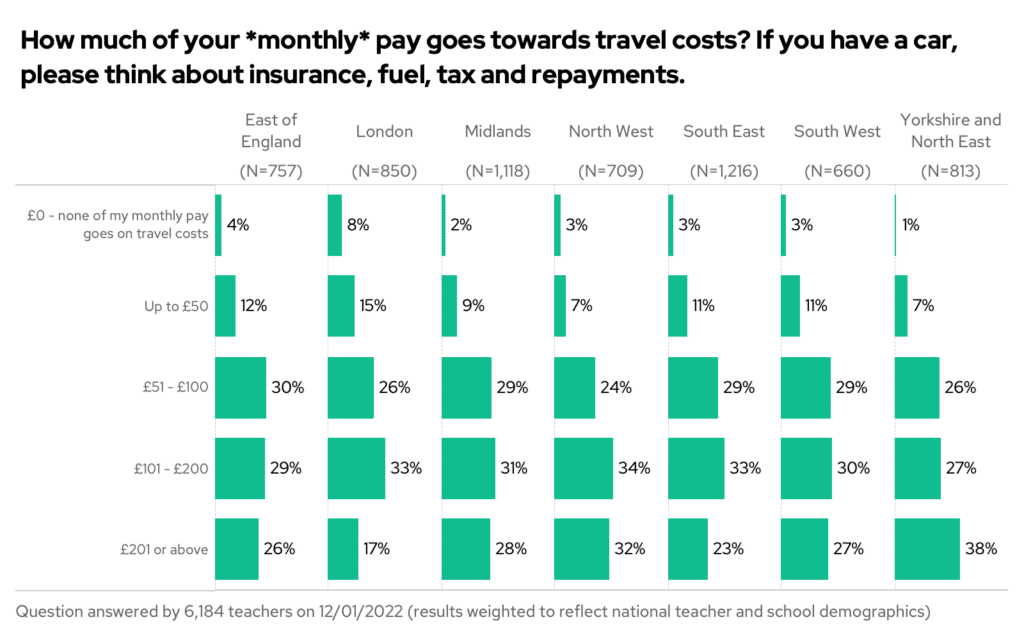Jump to section:
1. Should PE be a core subject?
Recently the House of Lords published a report suggesting that PE be made a ‘core’ subject alongside English, maths and science. The rationale is that one’s physical health is of vital importance, and so learning to look after it is just as important as other core subjects.
However, the suggestion was not overwhelmingly popular! Just 36% of primary teachers and 35% of secondary teachers agreed with the House of Lords that it should be given ‘core’ status.
While many PE teachers were in favour of making PE core, there was still some disagreement in the group of teachers “Other incl PE” (although this may be from other teachers in this category!).

We also asked this week about the extent to which secondary teachers think it’s important for students to arrive with strong prior knowledge from primary school. One reason we were curious is that there’s a huge focus on giving pupils a broad and balanced curriculum at the moment, largely driven by Ofsted. And one reason why Ofsted have directed their attention to it is because SATs were said to be skewing the primary curriculum so heavily.
However, the results below show that English and maths teachers are also the ones who think it’s very important for students to arrive from primary school with strong prior knowledge of their subject (72% and 84%). Science teachers aren’t even half as likely to think this!
If this seems dismissive it’s worth running a thought experiment: if a child dropped from the sky aged 11 and needed to start at secondary school, which subjects would they need prior knowledge of to be able to make sense of what’s going on? In that context, it makes sense to say that English and maths are the most important, whereas science could still be picked up.
Language teachers are the least likely to think it’s important – with many pointing out this is because they can’t assume that children will have experienced the same language at primary school that they will be taught at secondary.
Knowing this – is there anything about current education policy that should change? Do let us know on Twitter or via Contact Us in the app. We’re still curious!

2. Money talks!
The pandemic has hit household finances in different ways. Some people have saved a lot, whilst others have had to cover loss of family businesses or earnings of partners.
In the first year of the pandemic, we saw a slightly increase in the proportion of teachers who said they were living comfortably – however the rate is now at its lowest (31%) since we asked before the pandemic.
Fortunately, the percentage of responders who responded that their income falls well short has not significantly increased as a result – remaining around the 1% level.

As the rest of the world seems to be going online, one major outlay for you is the cost of getting in to school. As we’ve previously found, over two-thirds of you get to school by car, and it’s even high in London, where 50% of teachers travel by car each day.
On average, you spend upwards of £100 per month on travel costs! Not only that, but 38% of teachers in Yorkshire and the North East reported spending over £200 per month on travelling to school and back. On the other hand, London reported the lowest travel costs, with 8% not spending anything all!

What Londoners lack in travel expenses, they make up for with mortgage or rent payments – with over 30% of teachers in London paying over £1000 per month on mortgage or rent payments. The South East fares similar, with 20% of teachers paying over £1000 per month.
The North does fare better in this regard – with the Midlands, North West and Yorkshire and the North East reporting lower mortgage or rent costs than other regions.

With the government still planning to move ahead with changes to new teacher salaries, it’s likely that pay will come back onto the policy agenda.
We will therefore be looking at this again next year and are all ears for any other questions you’d like us to ask about the cost of living.
3. Mask up 😷
Back in March 2021, schools had just returned and most pupils were wearing masks. As term went on, and cases lowered, by June 2021 two-thirds of teachers reported that the majority of their pupils were not wearing masks.
Last week, after the Omicron changes, more students were wearing masks than previously – although more than 50% of teachers reported that more than at least 5% of their pupils were not.

There are particular regions where pupils are more likely to mask up than others!
Much of the south of England has high rates of mask-wearing. However, the midlands and the north report lower mask-wearing – in particular the North West, where 23% of secondary teachers reported that more than 50% of their pupils are not wearing masks. In the past, the North West tended to require mask-wearing more often, and had higher rates of compliance. Could it be that they are now more fatigued by it?

Finally…an update on how your CO2 monitors! Two weeks ago, we found that 4% of you were reading >1500ppm regularly on your monitors, but 61% of you didn’t have a monitor to record. One month on from the initial readings – have things changed?
Not much! The percentage of teachers who don’t have monitors has dropped slightly – from 61% to 54%, but in general the percentage of teachers recording each reading hasn’t changed much.

Finally… we know you love the daily read, so here are the ones from last week
The most read tip from the past week was: How to incorporate the goal-free effect into assessments
And here are the rest for your reference:





